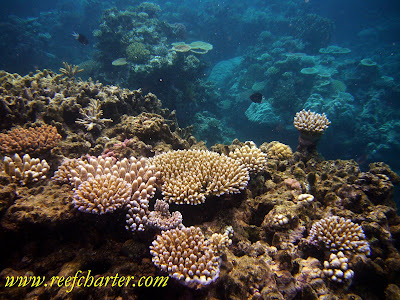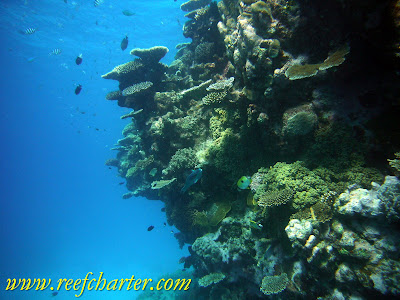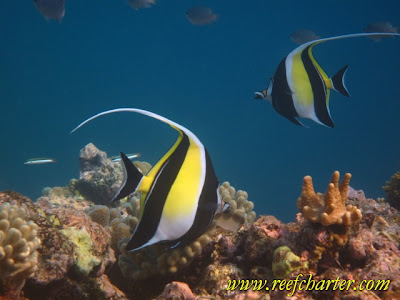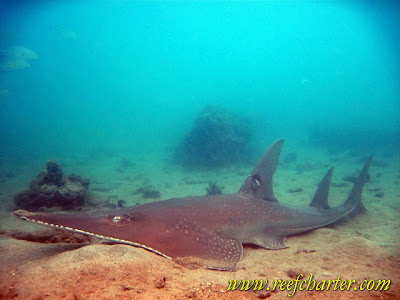A lot of our readers have asked for a brief history and background on coral reef formations. I’ll try not to bore everyone. Believe me it makes a better discussion when we are sailing or diving on the reef. The Great Barrier Reef is that like every other ecosystem in world. It’s life-cycle is far greater then man’s living history and we are only just starting to understand this complex underwater world. Most research only dates back 30 years and many data points are close to shore and don’t cover the full extent, depths and variety of coral reefs.
As far as the history of the world goes, reefs appear to be a fairly new phenomenon, only one million years old, a bit older than all of us. The earliest signs of the Great Barrier Reef appeared just over 500,000 years old. Just some background here that a lot of people are unaware of, regardless of what the press etc have been reporting, seas rise and fall naturally and have been doing so since time began. During the rising phase, without human interaction, seas rise about 10m every thousand years. Over the last 500,000 years we have undergone the rise and fall of oceans just under 20 times. The current Great Barrier Reef started growing between 6 and 9,000 years ago, that is when sea levels rose over old underlying reefs and corals started growing. Sleepy yet?
So when the sea level rises the coral reefs take full advantage and often the grow faster then the sea level rises. The coral keeps growing towards the surface, like a plant towards the sun, until the reef flat is exposed at low tides (sea level). When the coral reefs reach the surface, the growth stops or slows and the battle between mother nature and the reef continues. Strong winds, storms, predators, the summer heat, as well as numerous other factors are continually impacting the reef.
So how does the reef survive this continual attack? Well, corals have evolved over thousands of years to survive this delicate ecosystem. So a couple of things:
-When coral spawns it can only successfully seed and grow if the spot it comes to rest on is clean. That means no algae or live coral. So all the damage above actually makes way for the next generation of corals.
– These cycles are natural and the Great Barrier Reef has survived these impacts for hundreds of thousands of years.
– We know from core samples taken around the world that reefs are very resilient to natural events. Only a few species have become extinct over the last 100,000 years.
– Different types of corals grow at different rates so reefs have the ability to reclaim themselves very quickly and then diversify over time as long as there is “seed” coral remaining or another reef nearby.
Coral Reefs build up slowly towards the surface, building upon the growth of previous generations as well as dead coral caused by the impacts above. This is how snorkellers and divers get to enjoy the reefs everyday around the world. By minimizing our impact on the reef we can make sure that this cycle continues.
-Follow reef safe diving and snorkeling practices.
-Reducing major pollutants that have impact on coral growth to ensure that we do not wipe out entire reef systems.
Comparing samples from older reefs to the newer reefs we see that much more damage is happening with much more frequency and to date most reefs have proven resilient. Reefs closer to major human population centres have suffered the most impact. As long as we minimize our impacts, we can be pretty sure that these amazing ecosystems will continue to inspire generations to come.
Category: Species-of-the-Reef
The Barracuda – Fish Species of the Reef
Very popular with scuba divers on our trips to the outer Great Barrier Reef, barracuda are an impressive sight on the reef. The fearsome looking barracuda has a reputation for being and aggressive fish but it is mostly undeserved. They really use their incredible speed to shock and attack its victims of smaller fish. They do not see humans as a meal or as a threat unless actively provoked. They have been known to get aggressive where potential food is involved, another good reason not to feed the fish or support operators that feed fish.
They are often seen in large groups in the early morning or late afternoon hanging around at the back of the reefs. What are groups of barracuda called? Batteries. The can grow to about 1.6 metres or just over 5ft, the guys in the photo above are just over a metre each. They have a large swim bladder (gas filled bladder) they use to control their buoyancy in the water. This allows them to hover perfectly for long periods of time with very little use of energy.
Moorish Idols – Species of the Reef
The Moorish Idol is a common fish around the reefs and prefer to swim around the top of the corals feeding on sponges, and small invertebrates. Our snorkellers and divers often encounter the idol as it grazes amongst the coral gardens of the Great Barrier Reef.
It is easily recognized as it has a thin body with a round shape. This is highlighted but very distinctive yellow and black bands with white contrasts that run vertically up the body. During the night these colours actually become more dull and sink to the base of the reef for protection from predators. They also have several long dorsal spines that extend from the main part of the fin to flow over the back of the idol.
These fish are very popular with aquarium owners because of their bright colours and trailing dorsal fin. However they are notoriously difficult to keep alive, they can be very picky eaters and require large tanks as well as good water quality.
Moorish Idols mate for life. The release their eggs to drift where they drift until their larvae reaches about 7cm or 3in, when they as juveniles start to swim on their own and develop into mature adults.
Shovelnose Ray – Species of the Reef
These rays are a great thrill when you get one that is remaining still enough for you to get a good look it. Our divers always remark and remember the encounter as one to remember for years to come.
There is no wondering how this fish got its name, its big wide flat head and the way it works its way across the sand clearly resemble a shovel. They are also known as the guitarfish. Looking like a cross between shark, ray and fish the shovelnose ray is something completely different.
The shovelnose ray eats small crustaceans and are therefore seen around the base of reefs and grassy sea beds. When not feeding they like other rays they tend to bury themselves in the sand. So when diving keeping a close eye out and paying close attention to your surroundings you may catch one of these guys chilling out in the sand. But stay away as they are timid creatures and will probably take off as soon as you approach, so just check them out from a distance.
The shovelnose ray gives birth to live young and often twins, yes two at a time. The young normally stay around the area of their birth until they mature and start to wander off and explore areas of their own. They can grow up to about 1.8m or 6ft and have about 65-70 rows of teeth.




